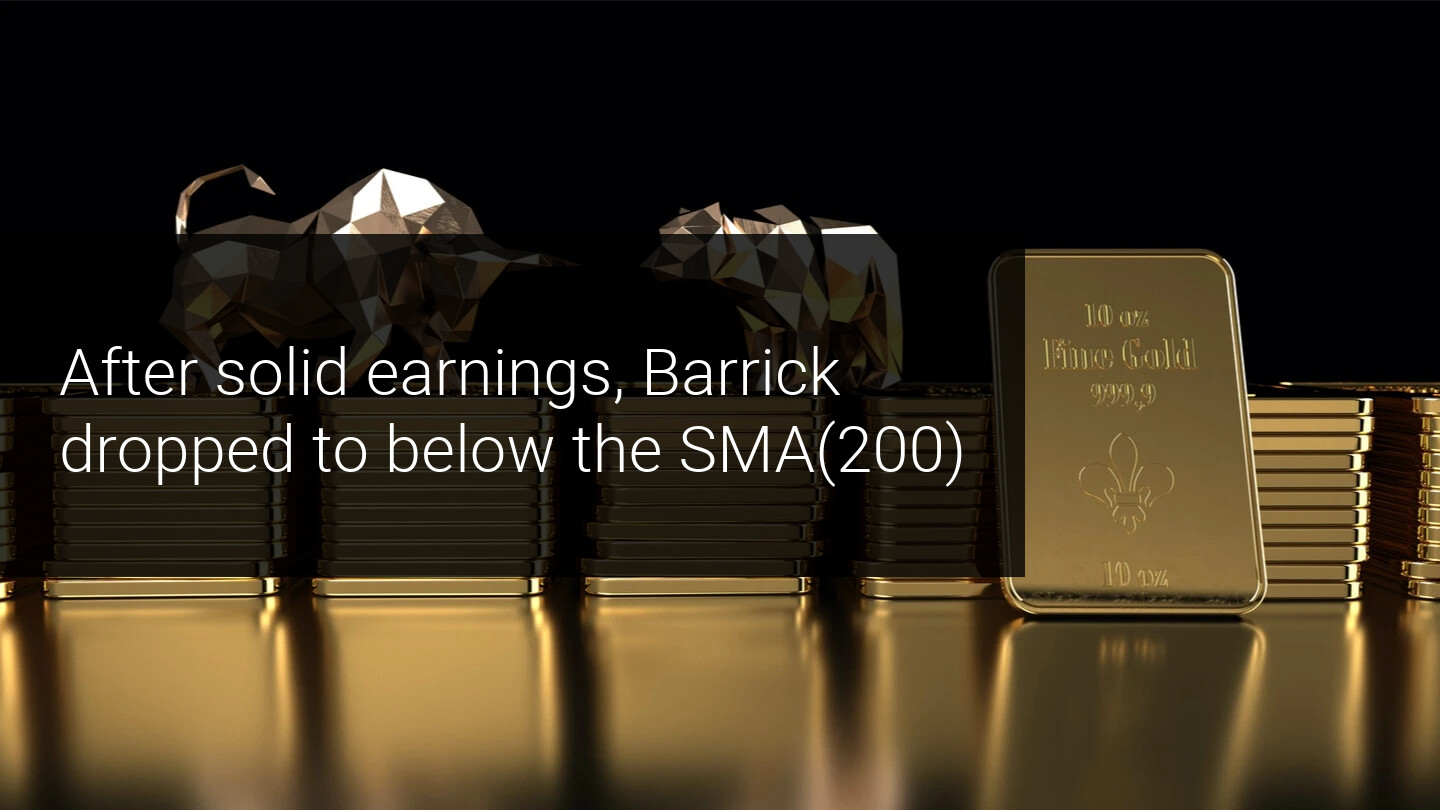Bulls Take A Hit: Barrick Gold Drops Below SMA(200)
Around two weeks ago, we painted quite a bullish picture for Barrick Gold/ABX, mainly driven by the recent strong earnings report which was delivered to investors and after news made rounds in August, that Warren Buffett's Berkshire Hathaway had built a position of a little greater than half a billion USD in the company.
What could possibly go wrong for bulls? Well, when looking at the ABX chart on a daily time-frame it seems as if the answer is "quite a bit"…

What's up Barrick? After solid earnings, drop to below the SMA(200)
We pointed out in our latest research piece on Barrick Gold that the stock gave back most of its post-earnings-release gains on Monday, the 09th after news hit the wire that Pfizer/BioNTech are on their way to a Covid-19 vaccine said to be effective in over 90% of cases. Today, the stock hasn't yet recovered, and has instead broken below its SMA(200) line – an overall negative sign for bulls
Technically speaking, the sustainable break below 26.00 USD is also price-action-wise a bearish sign, even though optimists will certainly argue that only a break below 22.15, the June lows, would negate the sequence of higher highs and higher lows.
Now, the big "BUT": there is a strong positive correlation from Gold and ABX over the last 500 trading days. The yellow metal is currently looking into the "abyss". With a break below 1,850 USD making further losses down to 1,750/760 USD a serious option, a quick and accelerated push down to 22.15 USD in ABX also becomes a serious option.
That said, we'd certainly want to become a little more defensive in painting a bullish picture for the Barrick Gold stock.
Still, the picture is not as dark as it may currently seem in our opinion:
- Last week, on Monday the 16th, Moderna announced that the phase 3 study met statistical criteria with a vaccine efficacy of 94.5% (P < 0.0001) and announced a longer shelf life for its COVID-19 vaccine candidate at refrigerated temperatures
- The yellow metal initially sold off (the stock market hadn't opened when the news hit the wire, so ABX was officially not affected by the bearish Gold price action)
- It quickly recovered its daily losses, closing the day nearly unchanged
While ABX didn't recover significantly, but continued to trade lower over the course of the remaining trading week (and finally breaking below its SMA(200)), we still expect market participants to realize that a vaccine alone won't cut it and that we are still far away from returning to "normal", especially from an economic standpoint.
Given this, we still see chances of a massive fiscal package from the US government, as well as from European countries after recent lockdowns, to stabilize the global economy and an ultra-dovish approach from central banks around the globe, especially from the FED to finance that "fresh" debt.
In addition to that, Gold and ABX are also about to enter a very bullish seasonal window in December and January, leaving the question about whether the drop to below the SMA(200) is a clear bearish sign or a "short-lived-endeavor".
How can you trade ABX in this environment?
Technically, the break below 26.00 USD and the SMA(200) is a clear bearish sign and the device would usually be: "Sell the bounce against 26.00, target: 22.15 USD".
But, given the still favourable environment for Gold and the upcoming bullish seasonal window, we consider short engagements in ABX very speculative.
While it certainly needs a break back above 30 USD and, thus, above the "earnings highs" from the 05th of November for us to turn overweight bullish on ABX again, a drop towards 22.15 USD seems attractive from a risk-reward perspective for a longer-term engagement. We expect ABX to head towards 55 USD, especially if the Gold price surges substantially above 2,000 USD and goes for a run up to 3,000 USD in the next 18 – 24 months:
(Click on image to enlarge)

Source: Admiral Markets MT5 with MT5SE Add-on ABX Daily chart (between June 27, 2019, to November 23, 2020). Accessed: November 23, 2020, at 07:30 AM GMT. Please note: Past performance is not a reliable indicator of future results, or future performance.
In 2015 ABX fell by 31.25%, in 2016, it increased by 116.53%, in 2017, it fell by 9.45%, in 2018, it fell by -6.43%, in 2019, it increased by 37.30%, meaning that in five years, it was up by 77.5%.
Disclaimer: The given data provides additional information regarding all analysis, estimates, prognosis, forecasts or other similar assessments or information (hereinafter "Analysis") ...
moreComments
 No Thumbs up yet!
No Thumbs up yet!



